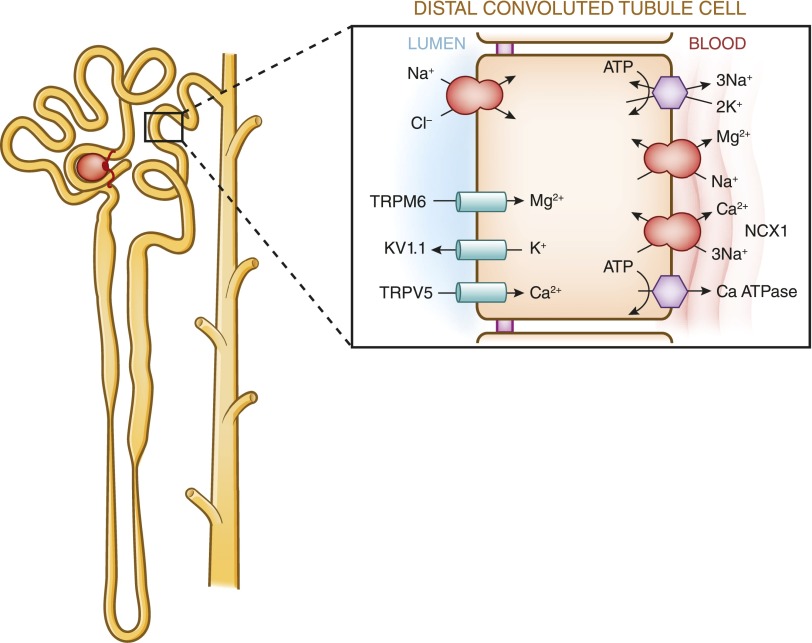Figure 5.
Model of calcium and magnesium absorption by distal convoluted tubules. Calcium entry across the plasma membrane proceeds through calcium channels with basolateral exit occurring through a combination of the plasma membrane ATPase and Na+-Ca+ exchanger. Calcium absorption is entirely transcellular. Calciotropic hormones such as parathyroid hormone and calcitonin stimulate calcium absorption. Calcitriol [1,25(OH)2D] stimulates calcium absorption through the activation of nuclear transcription factors. Inhibition of the apical NaCl cotransporter by thiazide diuretics or in Gitelman’s syndrome indirectly stimulates calcium absorption. In the model of magnesium absorption by distal convoluted tubules, approximately 5%–10% of magnesium is reabsorbed in the distal convoluted tubule mainly by active transcellular transport mediated by TRPM6. The absorbed magnesium is then extruded via a recently identified magnesium/sodium exchanger across the basolateral membrane. The apical K channel Kv1.1 potentiates TRPM6-mediated magnesium absorption by establishing favorable luminal potential. In addition, the basolateral K channel Kir4.1 and the γ-subunit of Na,K-ATPase also regulate magnesium reabsorption.

